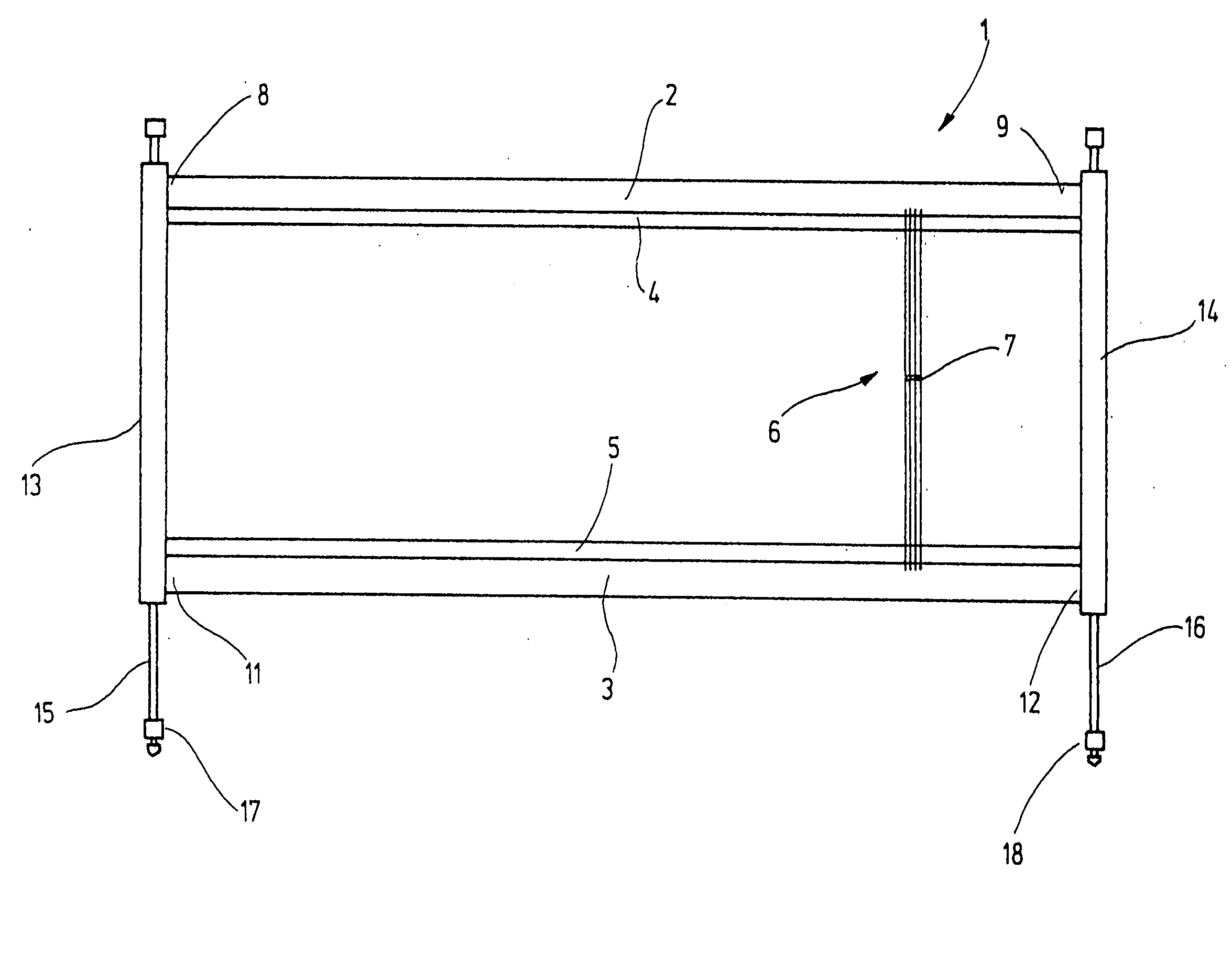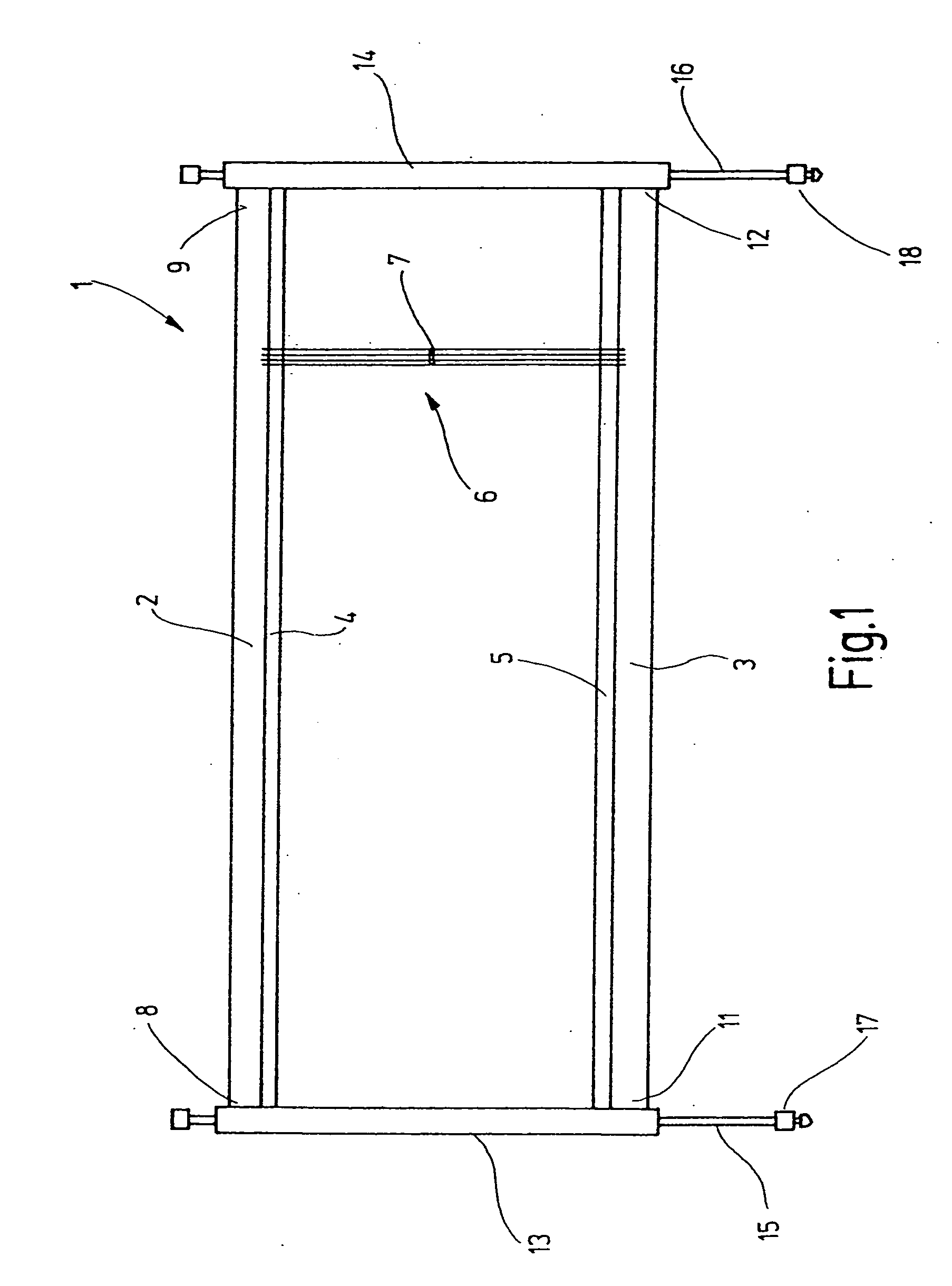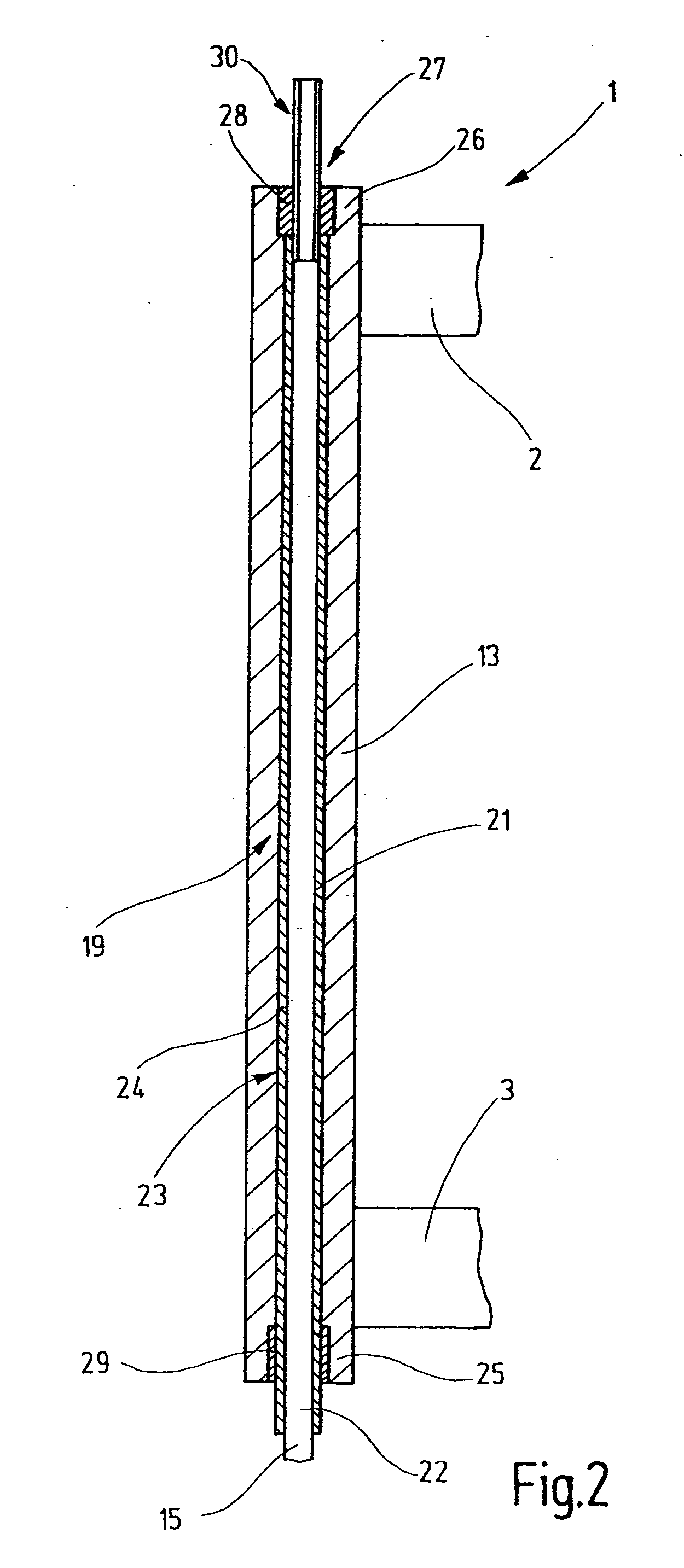Heddle frame
a frame and sleeve technology, applied in the direction of shedding mechanism, dobbie, textiles and paper, etc., can solve the problems of buckling, damage to the groove or bore through which they extend, limited access to coupling devices, etc., to prevent lateral vibration of the drive rod and prevent damage to the material comprising
- Summary
- Abstract
- Description
- Claims
- Application Information
AI Technical Summary
Benefits of technology
Problems solved by technology
Method used
Image
Examples
Embodiment Construction
[0024] In FIG. 1, a heddle frame 1 is shown that is intended for a high-speed power loom. The heddle frame includes frame rods 2, 3, which are embodied for instance as hollow aluminum profile sections. Supported on them are steel support rails 4, 5, on which heddles 6 are seated. The heddles each have an eyelet 7 for a warp yarn. With the heddle frame 1, the warp yams are moved upward and downward out of the warp yarn plane, in order to open and close sheds.
[0025] The frame rods 2, 3 are joined on their respective ends 8, 9, 11, 12 to lateral sampsons 13, 14, which in use are as a rule oriented vertically. The lateral sampsons 13, 14 with the frame rods 2, 3 form a rectangular frame. The lateral sampsons 13, 14 are guided longitudinally, or in other words in the present case vertically displaceably, either directly or via suitable guide means. To effect this driving motion, drive rods 15, 16 are provided, which extend through the lateral sampsons 13, 14. The drive rods 15, 16, with...
PUM
 Login to View More
Login to View More Abstract
Description
Claims
Application Information
 Login to View More
Login to View More - R&D
- Intellectual Property
- Life Sciences
- Materials
- Tech Scout
- Unparalleled Data Quality
- Higher Quality Content
- 60% Fewer Hallucinations
Browse by: Latest US Patents, China's latest patents, Technical Efficacy Thesaurus, Application Domain, Technology Topic, Popular Technical Reports.
© 2025 PatSnap. All rights reserved.Legal|Privacy policy|Modern Slavery Act Transparency Statement|Sitemap|About US| Contact US: help@patsnap.com



